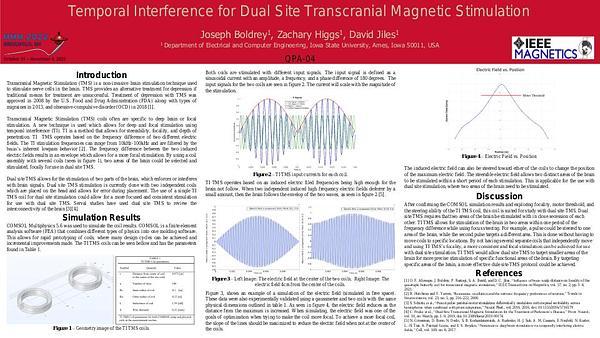Would you like to see your presentation here, made available to a global audience of researchers?
Add your own presentation or have us affordably record your next conference.
Lowering the power requirements of transcranial magnetic stimulation (TMS) would allow reducing the size and form factor of the stimulating coils, increasing the focality and penetration depth during the stimulation. Commercial TMS equipment typically uses frequencies from 1 to 5 kHz, while the coil currents vary from 1 to 5 kA. According to the Maxwell-Faraday equation, a large –dB/dt is required in the coil to induce an E-field above a stimulation threshold around 100 V/m at the target (Fig 1). Therefore, the development of technologies able to obtain similar E-field strength with lower currents is required. This work shows the design, construction, and tests of a novel high-frequency TM stimulator. For the first time to our knowledge, we have used analog modulations (AM/DSB-SC) over a carrier of 25 kHz to obtain a –dB/dt 10 times larger than the commercial stimulators. This permitted the reduction of the TMS currents in the same ratio, with a stimulation tone of 1.5 kHz over the carrier. The modulation shifts the stimulating energy out of the TMS band and audible range, leading to soundless operation compared to the uncomfortable clicking sound in current TMS equipment. Our results demonstrated: a reduction of currents to reach the referential E-field threshold of 100 V/m; a decrease of power dissipation in coils with possibility of unrestricted repetitive TMS (rTMS); a reduction in the coil sizes with increased focality and penetration depth; and hardware requirement reduction. Experimental work with rodents is in progress to demonstrate that, although the modulated signal will not stimulate neurons directly at such high frequency (due to the low-frequency response of the cell membrane), the demodulated version of it, obtained within the brain tissue with the superposition of a non-modulated carrier, can effectively recover the low-frequency envelope, stimulate neurons and induce motor evoked potentials (MEPs) (Fig. 1 and 2).
